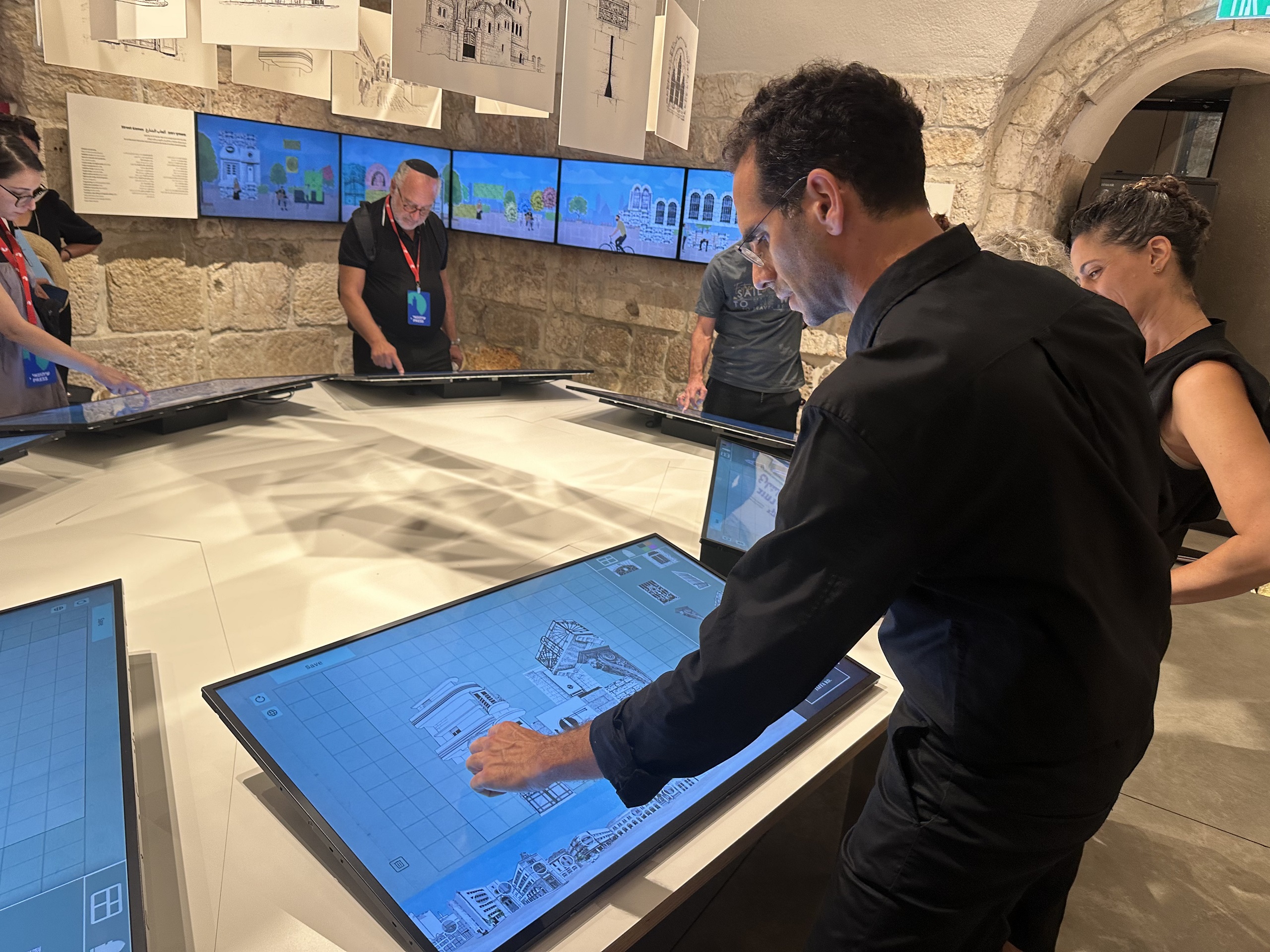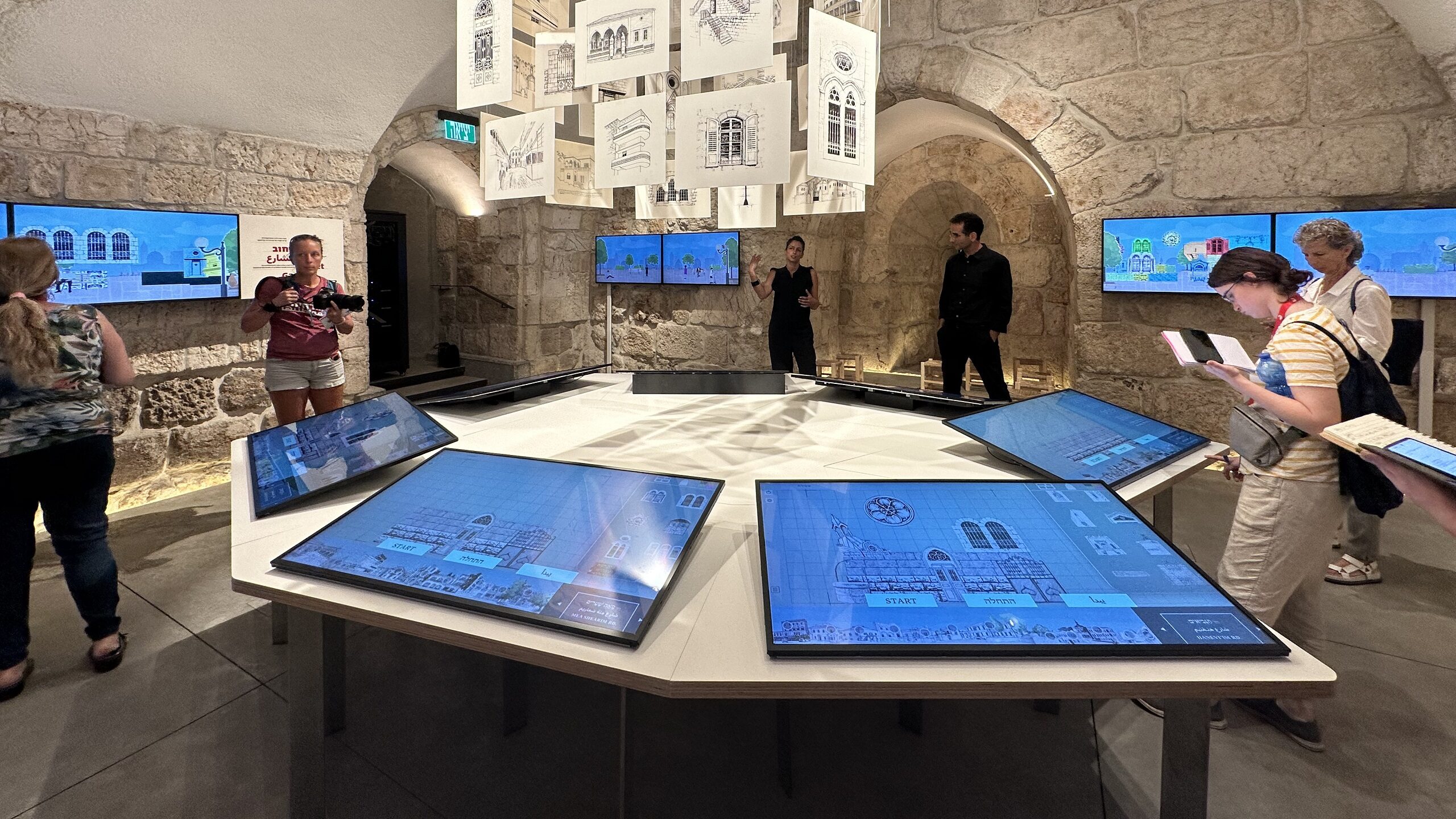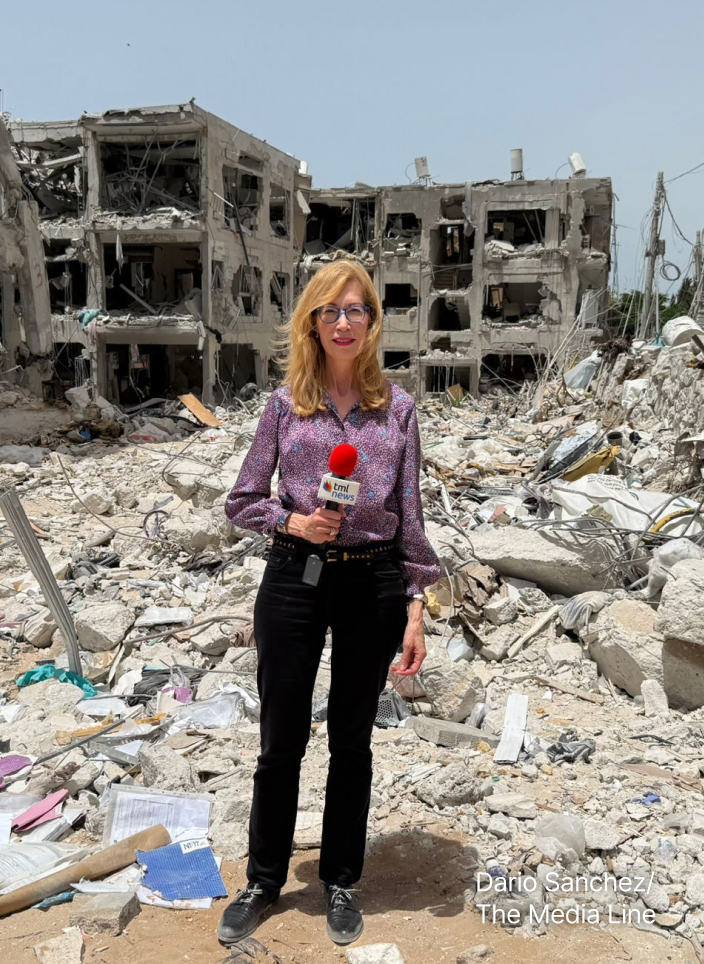Museum Unveils a New Way To Teach the History of Jerusalem’s Architecture
A new exhibit at the Tower of David Museum in Jerusalem’s Old City uses technology to transform the way we think about the city’s historical architecture
Just inside the Jaffa Gate of Jerusalem’s Old City, a recently renovated museum is unveiling a new exhibit that will transform the way the city’s architectural history is taught.
The Tower of David Museum recently finished a three-year, $50 million renovation program, and is now opening its first temporary exhibit called “Street Games: An architectural-interactive experience based on the books of architect David Kroyanker.” The exhibit utilizes seven large touch-screen displays that allow visitors to build their own versions of Jerusalem while learning about the different components that make the city’s historical architecture unique.
“You can learn about the history of Jerusalem and the history of architecture around Jerusalem just from playing our game,” said Yoav Cohen, the artistic and digital media director for the exhibit.
The exhibit features different components of Jerusalem’s architecture from the 16th century onwards. The curators of the exhibit said while ancient history is important, more recent history was a focus.
“We started with the walls, with the ancient walls,” said the exhibit’s architect and curator Dana Gordon. “The walls are the oldest part of the exhibition. And then afterward, we started looking at buildings and architecture outside the walls, which mostly began in the 19th century.”
The exhibit includes architecture as recent as the Chords Bridge, which was finished in 2008. The curators said the juxtaposition of the city’s older and newer buildings is important in the learning process to understand how Jerusalem has changed over time.
There are so many layers of history, of cultures, in the city
Give the gift of hope
We practice what we preach:
accurate, fearless journalism. But we can't do it alone.
- On the ground in Gaza, Syria, Israel, Egypt, Pakistan, and more
- Our program trained more than 100 journalists
- Calling out fake news and reporting real facts
- On the ground in Gaza, Syria, Israel, Egypt, Pakistan, and more
- Our program trained more than 100 journalists
- Calling out fake news and reporting real facts
DONATEJoin us.
Support The Media Line. Save democracy.
“There are so many layers of history, of cultures, in the city,” Cohen said. “I think when the audience or a kid or anyone that will play here goes out to the streets afterward, they will look at the buildings in a different way. They will find different details that they didn’t see before, maybe a different door or window.”

Artistic and Digital Media Director Yoav Cohen demonstrates the new technology in the “Street Games” exhibit, July 31, 2023. (Patrick Doyle/The Media Line)
Here, you’re actually the curator of the exhibition. Everything you create other people can see on the walls.
When a visitor enters the exhibit, they are met with screens surrounding the room as well as a large table in the center with touch-screen displays. The displays allow visitors to mix different components of Jerusalem’s architecture into one city street. For example, they may take a 19th-century window and place it on an ancient wall that hovers above a modern version of Jerusalem’s Jaffa Street. Through this process, the users have the option to read about each of these different components and learn how they’ve evolved over time.
When the visitor finishes their creation, it gets sent to the screens surrounding the room, which are filled with the architectural creations of others. In this way, the visitors become their own curators of the museum.
“It was very important for me from the beginning to find a way to use technology as a tool,” said Eilat Lieber, director and chief curator of the museum. “You can learn, you can read, you can hear, you can touch. But here, you’re actually the curator of the exhibition. Everything you create other people can see on the walls.”
The curators believe this method of teaching Jerusalem’s history is much more effective than a traditional lesson for both children and adults.
“I think that learning by playing and doing … could be a better way to learn and to remember things,” Gordon said. “It makes them use their mind in a more active way.”
Because the museum is located just inside the Jaffa Gate, the curators think visitors who walk through the Old City after their visit will see its architecture in a new light.
Jerusalem is unlike any city in the world. It is a meeting point between cultures.
“Jerusalem is unlike any city in the world,” Lieber said. “It is a meeting point between cultures. … We want people to be able to walk in the street and find the detail and recognize what they see.”
“Street Games” will run through April 2024. The curators hope it will open people’s eyes to the rich history of Jerusalem’s architecture.
“It’s the first time that I’ve curated an architecture exhibition that’s meant to be fun,” Gordon said. “It’s not only educational, it’s not only historical, but it’s also meant for you to be active.”
Patrick Doyle is a recent graduate of San Diego State University and an intern in The Media Line’s Press and Policy Student Program.



